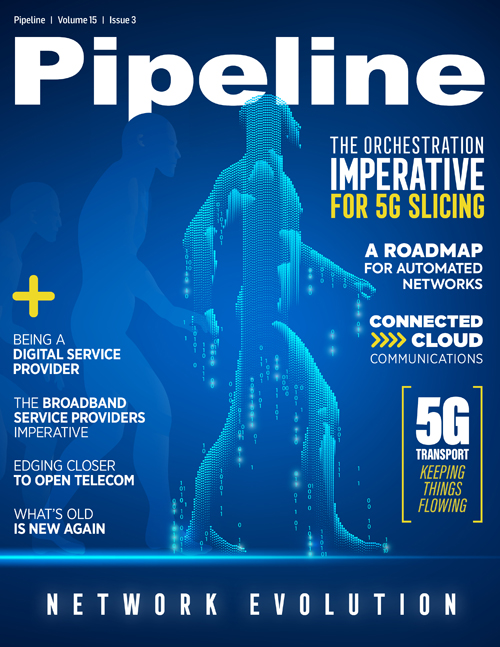5G Transport: Let's Keep Things Flowing
For 5G, the role of the transport network is still to provide backhaul, but 5G and the 3GPP split RAN architecture also brings the transport network into play for the fronthaul network. Point-to-point fiber is now not necessarily collocated with the CU/DU. With eCPRI, the RU and the DU may be separated, and the DU and centralized functions are split and may also be separated. While the RAN split from 3GPP allows separation, the performance requirements on the transport network between the equipment are stringent—especially in terms of capacity, latency and delay variation. Backhaul interfaces must also be enhanced to support the requirements already mentioned: performance, capacity, resiliency and scalability. New deterministic networking technologies that can be used for these enhancements are being developed in the IETF, IEEE and OIF.
Migrating to 5G
To support the evolution, the Forum is developing architectures and requirements which will create flexibility for operators in regard to which approach they take. These architectures and requirements will assist operators when it comes to deciding what technologies to use and how to change the transport network to support the challenges 5G will bring.
So what options are available to operators looking to evolve their transport networks? The two basic available options are: leverage what already exists and migrate or forklift and replace. While both approaches require changes, using what we already have—for example, existing transport networks based on MPLS IP and ethernet—and adding the additional bandwidth, performance, reliability and scalability capabilities on top is a much more efficient path to 5G.
In fact, as much as 80 percent of the evolution required to successfully deliver 5G can be achieved by leveraging what we already have. For example, Virtual Private Networks (VPNs) already provide independence between service types, Ethernet switch networks provide simple Layer 2 connectivity and IP networks give very scalable Layer 3 network capabilities. Meanwhile, MPLS can deliver traffic-engineered control and convergence, enabling multiple services to be delivered over the same network. And incorporating multiple access technologies, such as NG-PON2 and direct fiber connections, will help meet backhaul requirements. Finally, traffic management and multiplexing isolates services from each other to ensure the require Quality of Service for each is achieved.
Utilizing existing technologies in this way then allows the remaining 20 percent of the evolution required to happen over time. Network slicing is one example of this evolution, taking the principle of VPNs to give operators the ability to dedicate resources to specific services and customers. This will allow resource and performance-sensitive services to be offered on a single network. For example, the same network could be used for Internet access and remote surgery. All of this should enable new revenue generating services while optimizing the efficiency of the network they are provided over, lowering CapEx and OpEx.
Other technologies, including deterministic transport ones, to address new 5G requirements are also already being developed in the IETF, IEEE and ITU-T Study Group 15. These can then be integrated into the existing transport networks as technologies mature and consumer demand for applications requiring high performance and characteristics grows.
A standardized approach
Leveraging what we already have and integrating new technologies to provide a gradual evolution to 5G is very much at the heart of the Broadband Forum’s work on ensuring the transport network’s readiness for the 5G era. The Routing and Transport Work Area is working on the requirements for the 5G transport networks with a focus on five key areas: capacity, performance, reliability, scalability and security. The scope of this work includes control, management and data plane for the IP layer down to the physical layers, including time and synchronization, OAM, routing, resiliency, scalability, security, virtualization of the mobile transport infrastructure, and enablement of software-driven networking.
This complements the Forum’s ongoing work on fixed mobile convergence to develop a coexistence strategy which enables stress-free market-paced migration to new service launches and interworking between home networks and 5G core components. This work includes a 5G Access Gateway Function that adapts fixed access onto the 5G core. In addition, it considers and specifies several architectural deployment options and the underlying infrastructure-sharing aspects. The work will also devise strategies and develop specifications to address operator requirements for interworking existing fixed access subscribers and deployed equipment into a 5G core. This work is being carried out in conjunction with 3GPP.
With this sort of industry-wide collaboration and a seamless unification of fixed and mobile networks, the new era of services that 5G is promising could be with us sooner than we think.



















